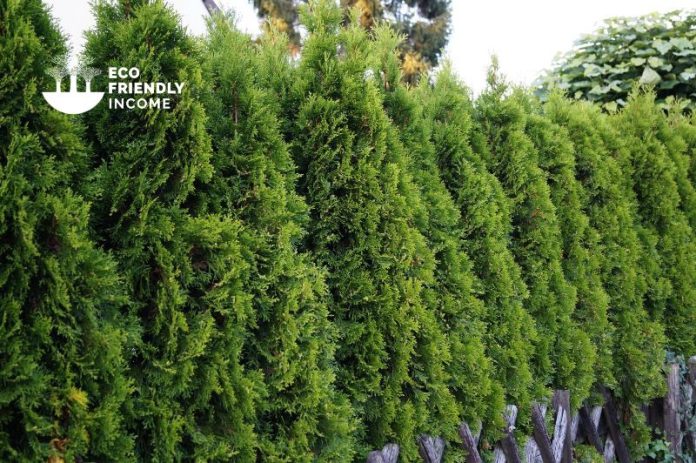
Featured Photo by Dieter Schlack / CC BY-SA 3.0
A field guide on how to identify and propagate White Cedar (Thuja occidentalis), a hardy tree that is native to eastern North America.
How to Identify White Cedar (Thuja occidentalis)
Leaves
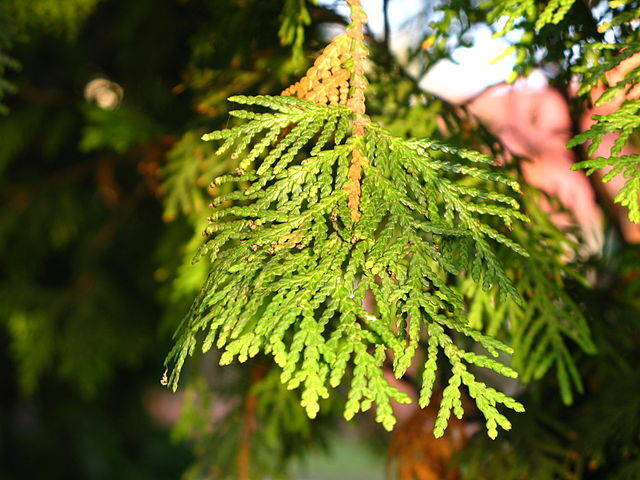
White cedar leaves are linear-shaped with an entire margin (smooth). They grow on the stem in alternate arrangements.
The leaves are scale-like, evergreen, and also quite fragrant.
Bark
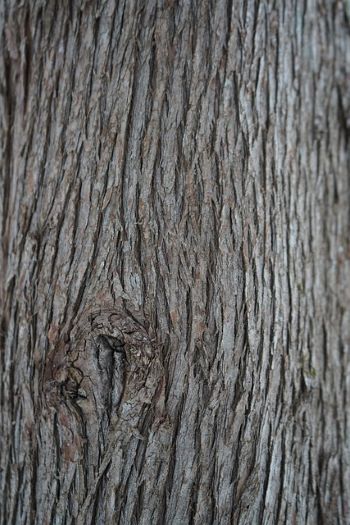
The bark of a White Cedar is pale brown, fibrous, and sometimes peels.
Young trees have reddish brown to gray bark with thin vertical ridges, while older trees have gray bark with new growth appearing brownish or reddish brown.
The vertical ridges on the trunk separate and spiral as the tree ages.
Cones
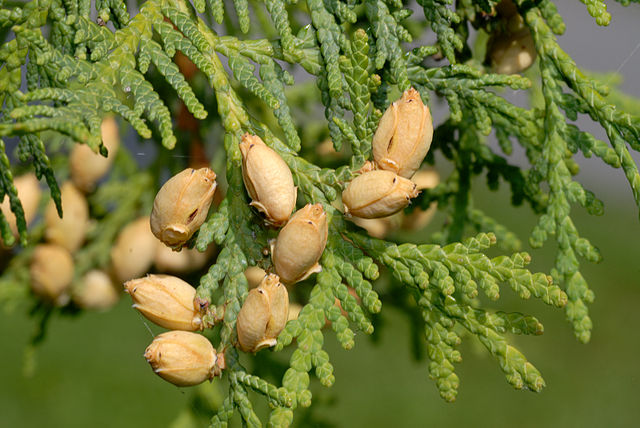
The male and female flowers on a White Cedar are tiny and egg-shaped, and are typically found on different twigs or branches.
The female flowers are a pinkish color and can be found at the tips of short terminal branches. Meanwhile, the male flowers are yellow and located on branches near the base of the shoot.
Flowering Season
Seed bearing cones start growing in early summer but are mature and ready to harvest only by late summer to early fall.
Habitat
White Cedar is a resilient plant that can grow in various soils, from well-drained to poorly-drained sites. It thrives in shaded areas, and is most commonly found in swamps, peat bogs, near streams, and lakes.
In swamps, it can form dense thickets that can live for over 400 years.
Some other understory plants that associate with Norther white cedar are:
- Speckled Alder (Alnus rugosa)
- Red-osier Dogwood (Cornus stolonifera)
- Fly Honeysuckle (Lonicera canadensis)
- Labrador Tea (Ledum groenlandicum)
- Blueberries (Vaccinium sp.)
- Creeping Snowberry (Gaultheria hispidula)
- Teaberry (Gaultheria procumbens)
Wildlife Value
It’s an important tree for a variety of animals.
Mammals such as white-tailed deer, snowshoe hares, beavers, and porcupine love to browse on the twigs.
Red squirrels gather their seeds as a food source.
Some birds that benefit fromwhite cedar are:
American Goldfinch
American Redstart
Black-and-white Warbler
Boreal Chickadee
How to Propagate White Cedar (Thuja occidentalis)

Hardiness Zone: 2-7

Soil Type: Neutral to alkaline clay, loam, sand.

Water: Normal.

Exposure: Full Sun to Partial Shade.
You can propagate white cedar with two effective methods:
- Stem Cuttings: It provides established trees faster, but is tricky, and will probably have a lower success rate.
- By Seed: The success rate is high but takes longer to get established saplings.
Thuja is one of the few conifer species that can be reliably propagated by stem cutting without much difficulty.
Seeds are also quite easy to gather.
All in all, these two techniques should be straightforward and you should be able to propagate your northern white cedars easily.
How to Propagate White Cedar (Thuja occidentalis) by Seed
Propagating cedar from seed is a sure bet, as the seeds are fairly easy to germinate and gather.
It’s all about being at the right place, at the right time, and being a little patient.
Let’s get into the details:
How to Harvest Seeds
If you have access to white cedar trees nearby, you can just gather seeds yourself.
Now the best time of the year to collect cedar cones is from late summer to early fall.
By that time, the cones will have matured and be ripe for picking.
- First, if the cones haven’t already opened naturally, place them in a paper bag to dry.
- They’ll open naturally within a couple of days.
- Next, if you can’t knock the seeds out, just open the cones yourself to extract them.
If you don’t have access to trees, I do have some white cedar seeds on hand for sale below (collected on September 18, 2023).
We offer free lettermail shipping everywhere in Canada for orders over $20.
Email us at [email protected] for details.
Stratification & Sowing
To grow wide cedar fir trees from seeds, follow these steps for cold stratification:
- Mix dried seeds with a lightly moist medium (sand or peat moss) in a labeled plastic bag.
- Acclimate the seed for 1 day in the refrigerator, then put the bag in the freezer for 45 days.
- Remove the bag and soak the seeds in water for 24 hours.
- Finish the stratification by placing the bag in the refrigerator for 14 days.
- Plant the seeds in well-draining soil and water regularly until they sprout.
- Expect germination in about a week.
How to Propagate White Cedar (Thuja occidentalis) by Stem Cutting
To propagate white cedar through stem cuttings, follow these steps:
Tip: Pick the right time, which is during the dormant period from late fall to early spring.
- Choose young and healthy trees to take the cuttings from.
- Identify the current season’s growth and take the cuttings just below the transition from green to brown.
- Scuff the bark about 1 inch from the base and dip in rooting hormones (1,500ppm IBA).
- Plant the cuttings in a rooting medium such as a sand and peat mix (90/10) and keep the soil moist.
- Optionally, use bottom heat and cover with plastic to retain moisture.
- Roots may take up to 10-12 weeks to form before repotting.
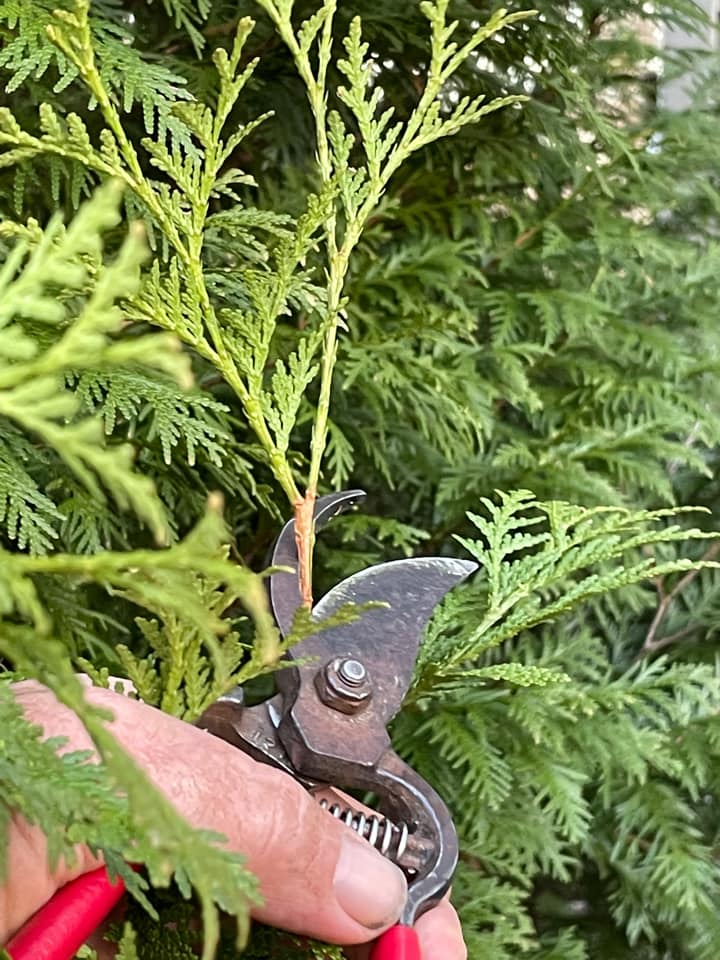
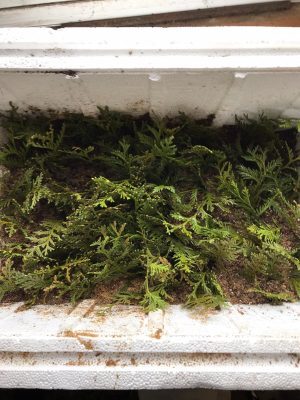
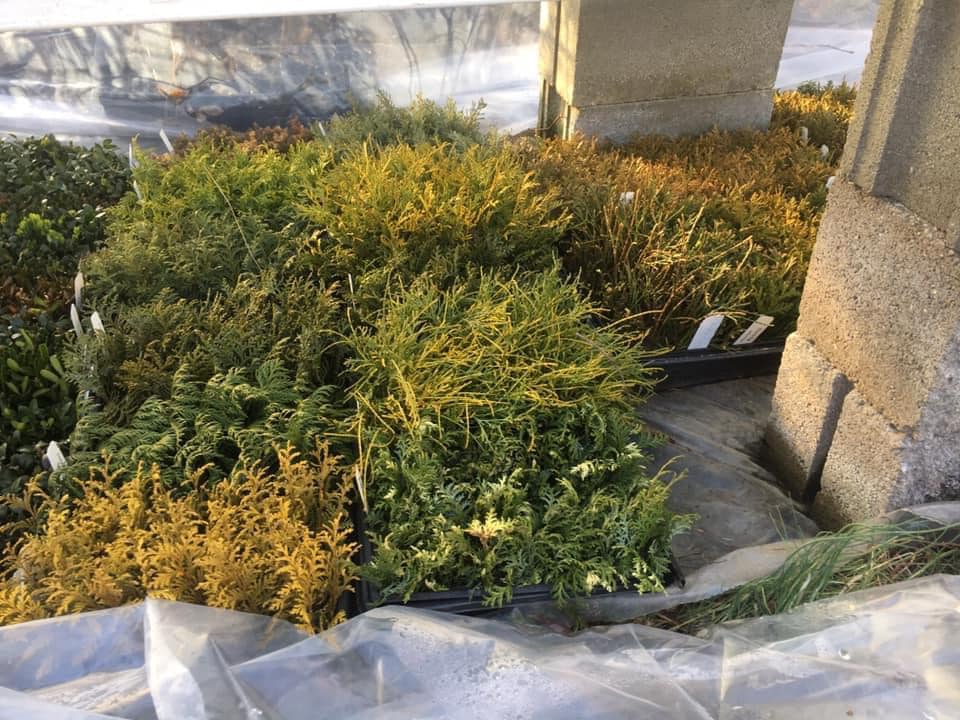
Cedar cuttings will first heal at the base by forming a type of crust, then shortly after roots will sprout.
Don’t tug at the cuttings as you might damage them!
Patience is key, and ventilation is also important to avoid rotting.
Good luck with your cuttings!
Got any questions, check these out. Not there? Ask down below.
FAQ
Q: How big do white cedars get?
A: They won’t grow too big, on average a white cedar will grow from 40-50 feet.
Q: How fast do white cedars grow?
A: Under ideal conditions, white cedar can grow from 1-2 feet per year.
Q: Do white cedar need full sun?
A: Not necessarily, they will also tolerate partial shade.
Q: Do white cedar trees have invasive roots?
A: White cedar has a shallow, but wide spreading root system. It’s used to living on rocky cliffs, so the roots can be quite strong.
